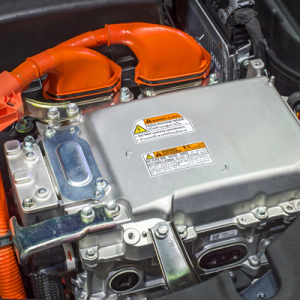Video Demo: Thermal Resistivity and Conductivity of Silicone Foam
Thermal resistivity and thermal conductivity can be two very important physical features of foam materials for certain applications. Most devices containing electronic components must be designed to deal with heat in one way or another. Electronic circuitry operates most reliably at lower temperatures. High operating temperatures decrease the service life of the device or module. It is critical for designs to either conduct or isolate heat away from delicate components to ensure ideal operating temperatures.
Read More
Topics:
Thermal Management,
Foams,
BISCO Silicone
When choosing a foam for a product design, one feature that should be considered is the compression set resistance of the foam. C-Set is one of the most important characteristics to consider, and this blog post answers three basic questions to explain why.
Read More
Topics:
Foams,
BISCO Silicone,
PORON,
compression set resistance,
Elastomers
Silicone elastomers are used in several diverse applications and industries because of their many unique properties. Silicone materials' attractive features include low compression set at elevated temperatures, flexibility at low temperatures, hydrophobic characteristics, high dielectric strength, low flammability, and can be food grade compliant. It is also lightweight yet high performing which is ideal for extreme environments.
Read More
Topics:
Elastomers,
Silicone
Die-cut Components for Medical Devices
We believe that true stories can tell you more than any marketing materials that we create. That is why we are sharing two new case studies in this blog post. Both case studies explore die-cut solutions that Marian provided to medical device companies. Quality and reliability are critical in this industry. Additionally, assembly efficiency and cost savings are important to the success of the business. In these case studies, you will see that Marian is well equipped and prepared to meet the stringent requirements demanded by the medical device industry. Enjoy!
Read More
Topics:
Foams,
PORON,
medical device
As medical device designs trend toward including cutting-edge electronics technology and wireless capabilities, Electromagnetic Compatibility (EMC) is a growing factor in device design.
Read More
Topics:
EMI Shielding
Imagine going 65 mph in your vehicle while on a road trip. The road you are driving on is old, so your vehicle bobs up and down the many dips and divots, your speakers are loud and are causing your rearview mirror to vibrate, making it hard to see, and your moon roof has a roaring noise sneaking through the cracks.
These foul disturbances are examples of NVH, also known as Noise Vibration Harshness.
Read More
Topics:
Foams,
BISCO Silicone,
PORON
Marian sales engineers are experts in designing high quality parts for any small, complex applications. Below, you will find links to two of our newest success stories that highlight laminated foam materials in two very different markets (LED lighting and automotive). In both stories, you will find that Marian's team of experts worked closely with customers to design a unique part and provided exceptional material recommendations to create a winning solution. Sales engineers must be strategic in choosing materials to ensure that they meet all requirements of the design.
Read More
Topics:
Pressure Sensitive Adhesive,
Foams
Marian has a brand-new demonstration piece to share with the world! Strategically named "Test My Memory," the demo illustrates the impact of compression cycling over time with 4 different foams. Neoprene, Polyethelyne, PORON Urethane, and BISCO Silicone are tested by being compressed for 48 hours.
Foam Material Compression
In the demonstration, you will see that certain foams depreciate as they take on impact over time, whereas other foams resist the compression set by returning to their original thickness. The material characteristic of being able to take a compression set, also called compression force defection, is extremely important in long-term sealing applications. The ability of the material to "push back" to fill in any potential gaps that would allow water or dust to pass through is critical. This makes such materials an excellent option for sealing gaskets. We wrote an entire blog post about compression force deflection, you can read it here: Compression Force Deflection in Foam Gaskets: A Critical Property
Read More
Topics:
Foams,
BISCO Silicone,
Compression Force Deflection,
PORON
Nitto TR Thermally Conductive Adhesive Tape Series
\Nitto’s TR series is a must-have for thermal and electronic applications. The TR series features a selection of double-coated tapes including TR-5912F and TR-5925F. These tapes exhibit powerful adhesion and thermal conductivity which accounts for their strength and reliability. Nitto recommends replacing the use of a screw-in an LED or other thermal applications with these thermally conductive adhesives for the best performance. Using the tape method offers superior thermal conductivity performance, and can extend the life of your LED, compared to using the screw method.
Read More
Topics:
Thermal Management,
Pressure Sensitive Adhesive
Pressure sensitive adhesives (PSAs) are defined as any transfer, single coated, or double coated bonding tapes that only require pressure in order to completely adhere and bond to a surface. One important component that single coated tapes and double coated tapes share is their requirement to have a tape carrier. Depending on the type of tape you're using, the carrier serves different purposes.
Read More
Topics:
Pressure Sensitive Adhesive









